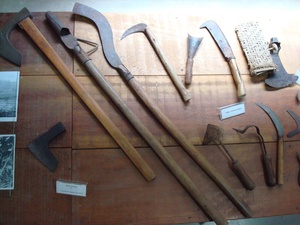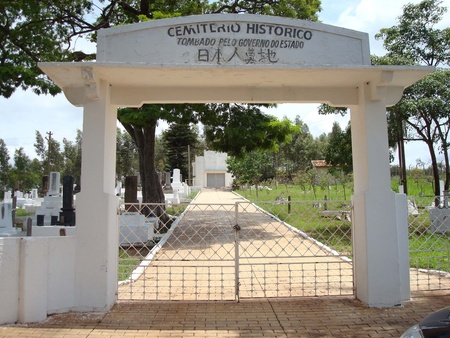My great-grandparents came from Japan and lived in the interior of São Paulo, in the cities of Registro, in Vale do Ribeira, and Álvares Machado, in the west of São Paulo. Interestingly, my family settled in these cities that have great importance in the history of the Japanese-Brazilian community.
Registration, support for Japanese immigration in Brazil
The largest city in the Ribeira Valley, Registro is known as the “Capital of the Valley” or “Capital of Tea”. It became the Landmark of Japanese Colonization in the State of São Paulo, in accordance with Decree nº 50,652, of March 30, 2006, as it was the first location to receive Japanese immigrants interested in investing in their own production in the region.
Ultramarina de Implementos SA (KKKK – Kaigai Kogyo Kabushiki Kaisha), was established in the city in 1912 and was authorized to operate in Brazil by decree 13,325 of December 11, 1918. The industrial and rural development company supporting Japanese immigrants received a donation of land from the Brazilian government to be distributed to newcomers.
After overcoming difficulties, they began testing various crops, including rice, coffee, sugar cane, tobacco, beans, reeds, pineapple, oranges, in addition to breeding silkworms. However, they soon discovered that bananas and black tea would adapt better to the conditions of the region, becoming the main crops cultivated.
The KKKK, as it became known, was the company responsible for the emigration process until the Second World War. In 1937, the company was dissolved and, two years later, its activities were suspended. The space consists of four large warehouses made of exposed brick, with clay tiles and arched doors, typical features of 20th century English architecture.
In 1990, the city council of Registro expropriated the architectural complex and declared it to be of public use. But, only in 2000, the State Government began the project to restore the building where the State Department of Education's Managers' Continuing Training Center and the Japanese Immigration Memorial are currently located.

Today, the company's former headquarters houses the Japanese Immigration Museum – KKKK. The collection includes objects used in agriculture by immigrants and others in their daily lives, as well as works and paintings by pioneering Japanese artists, renowned and naturalized Brazilians – Tomie Ohtake and Manabu Mabe – and descendants born in Brazil. My grandfather donated some objects that are on display at the site.
One of the main celebrations in the city, which even my father remembers a lot, is Tooro Nagashi. Held every November 2nd, the event is a tribute to the victims of the Ribeira de Iguape River. It is a ceremony with small boats lit by colorful candles, made by hand, which are released into the river. By releasing these boats, participants illuminate the path of the spirits and make requests for peace.
The city of the only Japanese cemetery in Latin America
In Álvares Machado, in the west of the state of São Paulo, is the first and only Japanese-only cemetery in Latin America, listed by Condephaat (Council for the Defense of Historical, Archaeological, Artistic and Tourist Heritage of the State of São Paulo) in 1981.
Its history is related to Japanese immigration. The first Japanese immigrants arrived around 1916 in the Brejão neighborhood, which gave rise to the city of Álvares Machado. Over time, the number of Japanese people going to the interior became constant. Many came aboard the ship Kasato Maru, the first to come to Brazil and docked in the port of Santos on June 18, 1918. These immigrants dedicated themselves to agriculture and, between 1920 and 1925, there were already more than 30 families in Brejão .
At the beginning of colonization, burials were carried out in Presidente Prudente, in a cemetery where the bus station is today. Diseases – such as yellow fever – were frequent and intense, many people did not resist and there was no possibility of transporting the bodies to the neighboring city, as the journey was made on foot.
Therefore, a delegation of Japanese people was created with the aim of requesting authorization to found a cemetery under the name Japanese Cemetery in 1918. In the ohaka (“cemetery” in Japanese), 784 Japanese people and direct descendants are buried, and one Brazilian – Manoel, who was killed when defending a Japanese family from a gangster who wanted to take over the farm.
The cemetery operated until 1940 and was closed because the idea was considered racist. Burials were prohibited at the site by order of the President of the Republic – at the time, Getúlio Vargas – and the dead from the Japanese colony began to be buried in the municipal cemetery of Álvares Machado.
Annually, Shokonsai, a religious cult for the souls of ancestors, is held at the Japanese Cemetery. On the second Sunday of July, a mass (Catholic or Buddhist) is celebrated, in addition to visitors saying prayers for peace and lighting candles on each of the tombs as a tribute to all the dead.
© 2016 Tatiana Maebuchi







